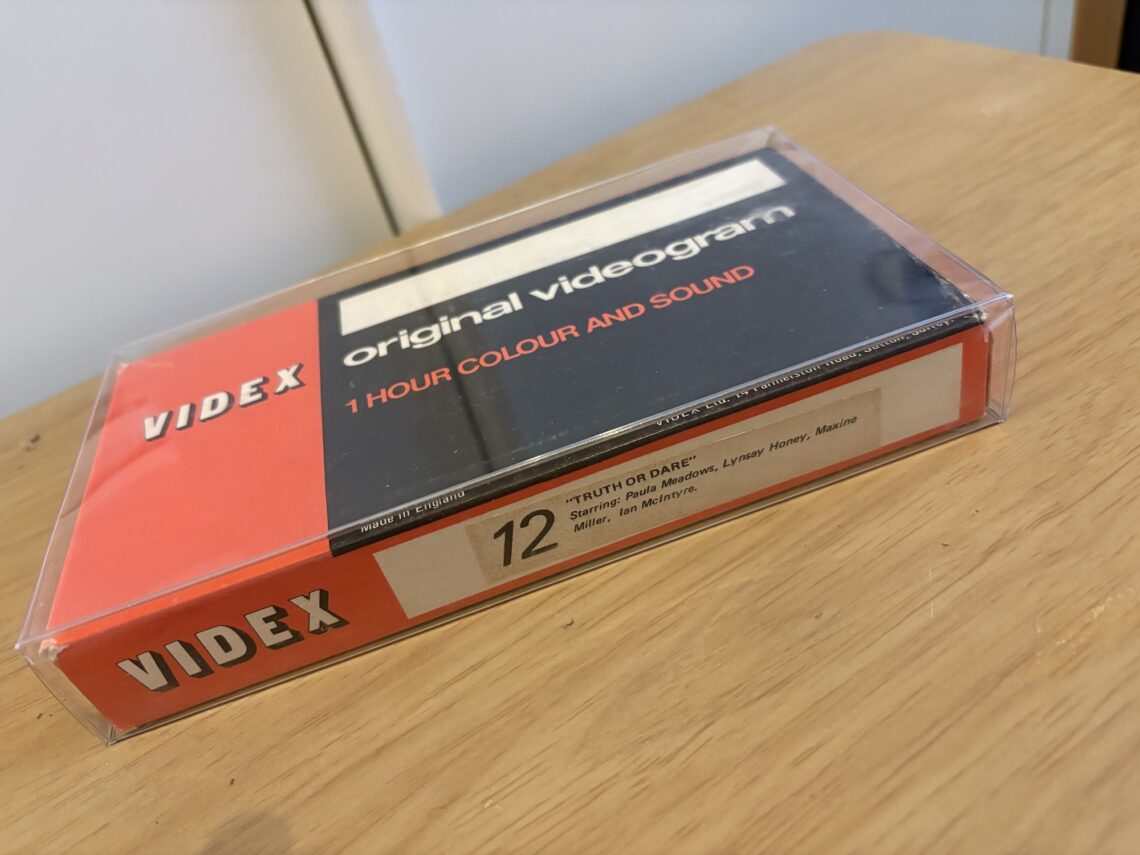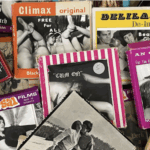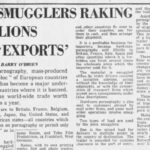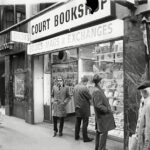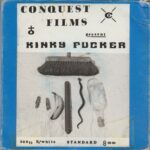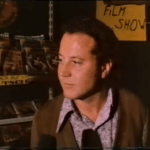It’s been a busy month at Under the Counter HQ. I did two sell-out talks, one for the Soho Society and another at the Bishopsgate Institute, and presented a paper on the archive at the Original Copies conference at the University of Turin. We’ve also received some generous new donations to the archive, and one recent arrival at Bishopsgate is a VHS copy of Truth or Dare (1980), a film made by the British pornographer Mike Freeman. It joins other items in the collection that document the gradual shift from small-gauge film to home video within Britain’s illicit screen economy. Physical copies of Freeman’s Videx films are not easy to find, and this example offers a small but valuable insight into how the early video market operated before the introduction of the Video Recordings Act 1984.
Coincidentally, I recently published a chapter on Truth or Dare in Screening Adult Cinema (Routledge, 2024), edited by Farrah Freibert, Peter Alilunas and Desirae Embree, so it is particularly pleasing to now have an original copy of the film in the archive. That chapter makes the case for the film’s significance, identifying it as one of the first British shot-on-video hardcore productions and situating it within the short-lived, largely unregulated period of domestic video production at the start of the 1980s. Having the VHS in the collection provides a tangible link to that research and allows the film to be examined as both a cultural and material artefact.
Freeman had been active in the 1960s as a maker of short 8mm “rollers.” After serving a prison sentence, he returned to filmmaking in 1979. Drawing on his earlier experience of self-taught production and small-scale distribution, he registered the company Videx and began producing new material using Electronic News Gathering (ENG) video technology. Between 1979 and 1983 he made around twenty titles, selling them by mail-order through discreet adverts in Exchange & Mart and Video World.
At the time, it was unclear whether a video cassette could legally be defined as an “obscene article” under the 1959 Obscene Publications Act. This uncertainty created a short window in which independent producers could operate with relative freedom. While others, like John Lindsay, re-released older rollers on tape, Freeman seems to have been alone in producing new hardcore content specifically for the home-video market.
Truth or Dare was one of his earliest and most ambitious efforts. Shot in a semi-detached house in Balham, South London, it featured Lindsay Honey—then a musician and model, later better known as Ben Dover—and Paula Meadows, a Royal Academy-trained actor who would go on to a successful international career as performer and artist. The script, written by Meadows’s partner Shaughnessy, follows a young woman’s encounter with a pop musician who challenges her inhibitions.
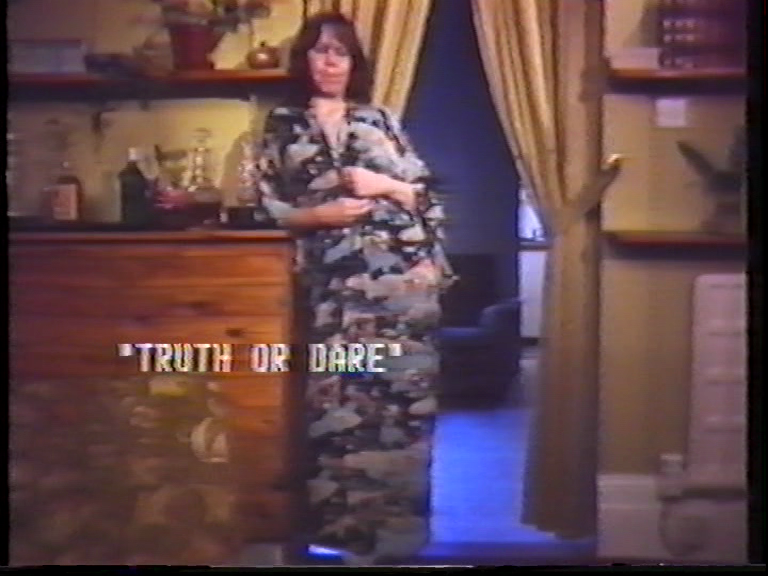
Although the 16mm Bolex cameras Freeman had used in the 1960s were already portable, ENG equipment offered other advantages: sync sound, ease of duplication, and the ability to record long takes directly onto tape. It also introduced a range of technical frustrations, such as short battery life, heavy shoulder-mounted decks, and expensive editing facilities. These limitations are evident in Truth or Dare, which displays uneven sound, loose framing and abrupt edits. Later, in an interview with me, Honey recalled Freeman’s methods with some affection:
“Mike’s modus operandi on set was to smoke loads and loads of pot and just make stuff up as he went along… He invented gonzo porn by mistake and didn’t even realise it.”
Freeman himself later admitted that he learned to use the equipment as he went, paying £250 an hour for editing and struggling with the weight of the U-Matic deck. Yet these very constraints now give the film its character—a rough, improvised energy that captures a moment of transition between formats and production cultures.
Running for just under an hour, Truth or Dare was advertised as “an uncensored erotic videoplay for adults” and made available on VHS, Betamax and Philips 1700 systems, selling for around £40, highlighting the prices illicit pornography could then command. For a film made with borrowed equipment and limited technical knowledge, it represents a surprising level of enterprise.
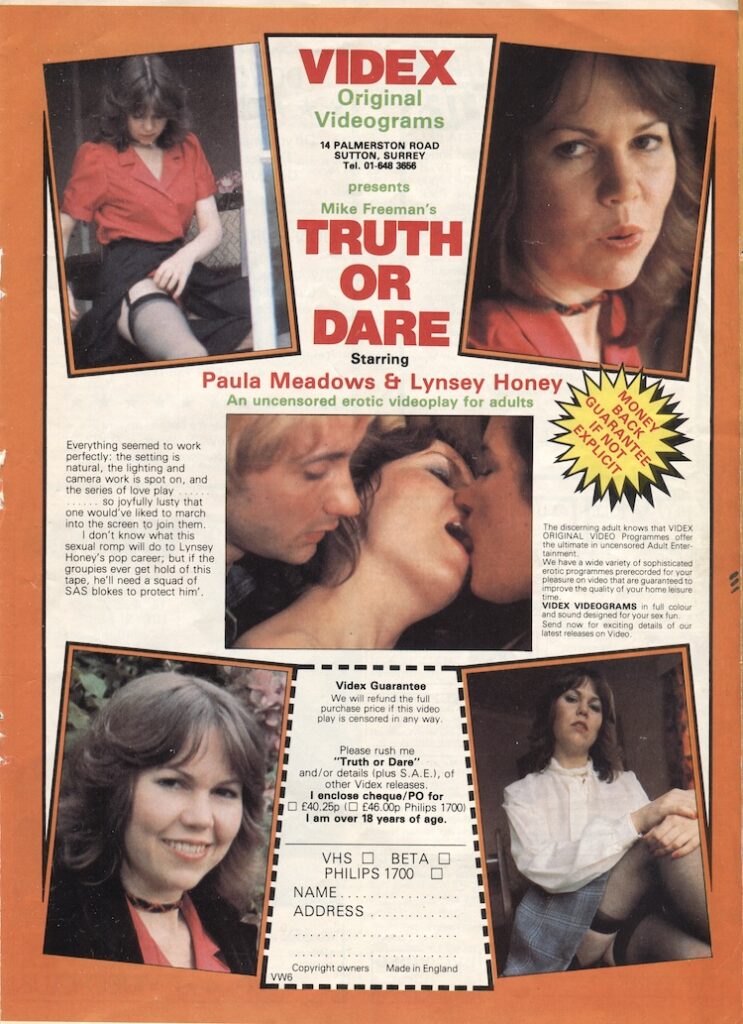
The donated VHS copy will be catalogued as part of the Under the Counter collection at Bishopsgate, joining Freeman’s other Videx title What a Gay Day!, where it adds to the record of how British producers worked at the margins of legality and professionalism during a formative but often overlooked moment in the country’s screen history. Donations like this help preserve a fragile record of Britain’s hidden media past—one built not only from surviving films but also from the stories, technologies and labour that surrounded their making. A huge thank you to We Buy any Porn and Tony for their generosity.

